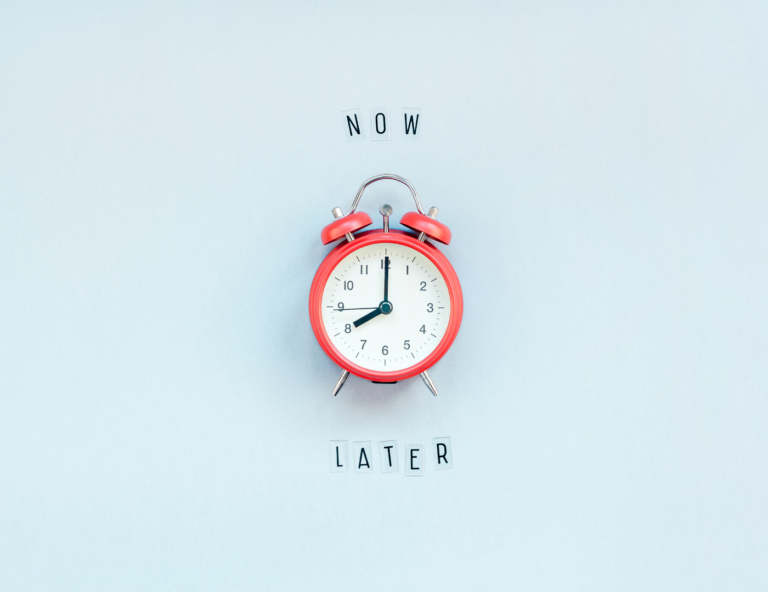Coffee & Code: Why the Best Ideas Come from Casual Conversations☕
Imagine a modern-day Renaissance man, Ty Bohannon, seated at a rustic table, a steaming cup of coffee by his side, fingers dancing on a laptop, discussing the intricacies of a digital algorithm. “Coffee & Code” isn’t just about caffeinating and coding.
It’s a symphony of innovation and conversation, where caffeine stimulates the brain and casual dialogues catalyze groundbreaking ideas.
It’s the blend of the stimulating aroma of a fresh brew and the electric buzz of breakthrough code crafted in the spirit of collaboration and pioneering futures.
Benefits of Coffee & Code
Navigating the complex world of digital transformations requires more than just hard skills; it needs a dash of crazy – in a good way . The “Coffee & Code” model offers a relaxed atmosphere that fosters creativity and spontaneity.
Just as the finest ideas often come from unexpected places, these informal sessions are breeding grounds for innovative solutions.
Over a cuppa, barriers dissolve, hierarchies blur, and minds open. While one hand holds a mug, the other crafts the future, ensuring businesses work smarter, leveraging the true power of strategic technology.
Origin of the Term “Coffee & Code”
As delightful as navigating the subtle nuances of a sushi roll, tracing the term “Coffee & Code” is a journey of its own. While its origin remains shrouded in the aromatic mists of time, it likely emerged from tech hubs and start-up ecosystems.
These were spaces where multipreneurs like Ty would converge, their conversations punctuated by coffee mugs clinking and keyboards tapping.
The phrase perfectly encapsulated this union of caffeine-fueled creativity and digital mastery, vividly depicting the modern-day tech alchemist.
Precedents for Coffee & Code
Before “Coffee & Code” became the mantra for innovative collaboration, there were precedents that set the stage. Think of the salons of 18th-century France or the literary gatherings of the Bloomsbury group.
These were spaces where intellectuals and creatives mingled, ideas cross-pollinated, and revolutionary concepts were born. Just as coffee has always been a beloved companion to thinkers, from writers to artists, the act of coming together over a shared passion has age-old roots.
Today’s “Coffee & Code” sessions are the digital era’s answer to these historic convergences, brewing a rich blend of the past and the future.
Taking a Break to Foster Creativity
Navigating the myriad channels of code and strategy often requires more than relentless focus; sometimes, it demands a step back, akin to a master painter admiring his canvas from a distance.
Enter the coffee break. It’s not just a pause; it’s a moment of respite, a tactical retreat to allow the mind to breathe. Like a pioneer of the digital frontier, taking that cup of joe in hand is a ritual.
It symbolizes stepping back, viewing the landscape from a vantage point, and then, with renewed vigor, diving back into the matrix of innovation.
The Psychology Behind Coffee Breaks and Creative Thinking
Have you ever wondered why some of the most groundbreaking ideas come when you sip that espresso? It’s no accident. Delving into the psychology of it, when we allow ourselves a momentary break from intense focus, we let our brains wander.
This “default mode,” as some neuroscientists term it, is where spontaneous connections occur. Combine this with the stimulating effects of caffeine, and you’ve got a potent mix.
Coffee doesn’t just awaken the senses; it stimulates the synapses, making those casual, coffee-infused chats a breeding ground for genius.
Strategies for Taking Effective Breaks During Work Hours
Crafting the future of digital transformation isn’t just about non-stop work; it’s about working smarter. And sometimes, that means knowing when to pause. But how do you make the most of these breaks?
First, set regular intervals – the classic ‘Pomodoro Technique’ suggests 25 minutes of work followed by a 5-minute break. During these moments, step away from the screen. Go for a brief walk, converse, or savor your coffee.
Also, consider asynchronous collaboration, allowing team members to take breaks on their terms ensuring a continuous flow of ideas around the clock. Remember, it’s not about prolonged rest but strategic moments of relaxation.
Examples of Successful Projects from Coffee Breaks and Office Chats
History is rife with tales of ‘aha!’ moments during the most unsuspecting times. Take the story of a particular Renaissance leader who conceptualized a strategy merging LEAN methodologies with agile digital marketing during a casual chat over a latte.
Or consider tech giants like Google, where the concept of ‘20% time’ (where employees spend 20% of their time on personal projects) has led to innovations like Gmail.
Such tales aren’t just anecdotes; they underscore the profound impact of serendipitous conversations. These coffee-fueled dialogues aren’t mere chit-chat but the symphonies from which masterpieces emerge.
Technology in Conversation: Board Games, Design Patterns, Detailed Design, and Graphic Design
In the bustling, dynamic world of a modern-day Renaissance leader, where the digital realm meets human touch, lies a delightful confluence of technology and tactile experiences.
Think of it as a dance: a choreography where board games become representations of algorithms, and design patterns evolve as the beats to which ideas move.
This waltz isn’t just about technology; it’s about understanding how various domains intersect, creating a rich tapestry of solutions, strategies, and stories.
Board Games as Learning Tools
Diving into the realm of board games, one might be surprised by the layers of strategy, foresight, and decision-making involved. These aren’t just pastimes; they’re immersive experiences that mirror the challenges of the business world.
Each move, each piece, and each strategy can be likened to the decisions a multipreneur faces. And as these game pieces dance across the board, they foster critical thinking, risk assessment, and collaborative problem-solving.
Like sipping on a favorite coffee brew, playing a board game can be a relaxing escape and a brain-churning challenge, crafting minds ready to tackle the digital age’s puzzles.
Design Patterns as Problem-Solving Tools
Like the intricate details in a cup of finely brewed coffee, design patterns offer frameworks that address recurring challenges in software design. They are the unsung melodies in the cacophony of coding, providing structure and consistency.
When faced with a challenge, a developer can lean on tried-and-tested patterns instead of reinventing the wheel, much like a Renaissance leader would rely on age-old wisdom while pioneering new frontiers.
In essence, these patterns are not just tools; they’re the strategic blueprints that empower developers to craft solutions efficiently and elegantly.
Detailed Design and Graphical Design Strategies for Problem Solving
In the vast design ocean, where creativity meets functionality, detailed design, and graphic design are like two compass points guiding the way.
Detailed design delves deep, mapping out every nuance of a product or system. It’s the meticulous planning that ensures every feature, every interface, works seamlessly. On the other hand, graphic design is the visual symphony – it captures attention, narrates a story, and provides an immersive experience.
Together, they’re a potent combination. Like a navigator charting unknown waters, these design strategies ensure that the destination is reached and the journey is memorable.
Caffeine for Focus: Different Types of Coffees from Around the World
Ah, coffee! The muse of many a multipreneur and the silent partner in countless innovations.
But coffee isn’t just a monolithic entity; it’s a world, a delightful variety of flavors, aromas, and experiences waiting to be explored.
Understanding the Different Types of Coffees Around the World
Embarking on a global coffee tour is akin to a digital pioneer exploring various tech ecosystems. Every region offers a unique flavor profile, from the robust espressos of Italy to the smooth lattes of Spain, from the rich Turkish brews to the lightly roasted beans of Ethiopia.
Each cup tells a story, encapsulating the culture, history, and spirit of its place of origin. As you sip on these varied brews, you’re not just tasting a beverage; you’re imbibing an experience, gaining insights, and finding that spark of inspiration for the next big idea.
After all, in every coffee bean lies a universe of possibilities.
Conclusion:
In the dynamic dance of the digital age, where the lines between technology, creativity, and human connection blur, the magic of “Coffee & Code” lies.
It’s not merely about caffeinating or coding; it’s about embracing the synergies that spring from spontaneous conversations, immersive experiences, and innovative ideas. Much like the myriad flavors of coffee from around the globe, the world of technology is vast, varied, and vibrant.
As we navigate this journey, one thing remains clear: the best ideas, the most profound insights, often emerge from the most casual of chats, often over a cup of coffee.
So, the next time you ponder a challenge, take a step back, brew yourself a cup, and let the magic unfold.
FAQ Section
Q: Why is there an emphasis on casual conversations in the “Coffee & Code” concept?
A: Casual conversations foster an environment free from pressure, enabling genuine exchange of ideas. The relaxed atmosphere often leads to more creative and out-of-the-box thinking.
Q: How can board games be compared to business strategies?
A: Board games often require foresight, decision-making, risk assessment, and strategy—skills directly applicable to business. One can harness and hone these essential skills in a real-world context by playing and understanding these games.
Q: Are there specific design patterns that are especially useful for problem-solving?
A: Yes, there are several established design patterns like Singleton, Factory, Observer, and Strategy, among others, which offer proven solutions to commonly faced design challenges in software development.
Q: Can “Coffee & Code” be applied in non-tech industries?
A: Absolutely! While the term originated in the tech sphere, the essence of “Coffee & Code” – fostering creativity and collaboration over casual conversations – is universal and can be applied across various industries.






